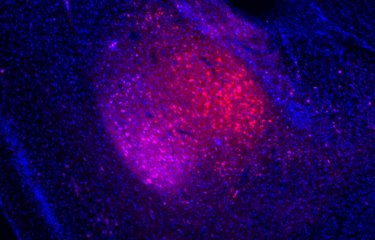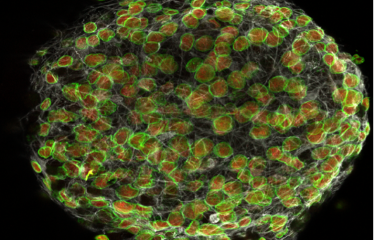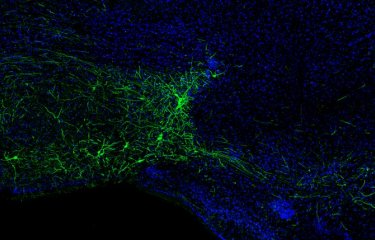Repairing the brain
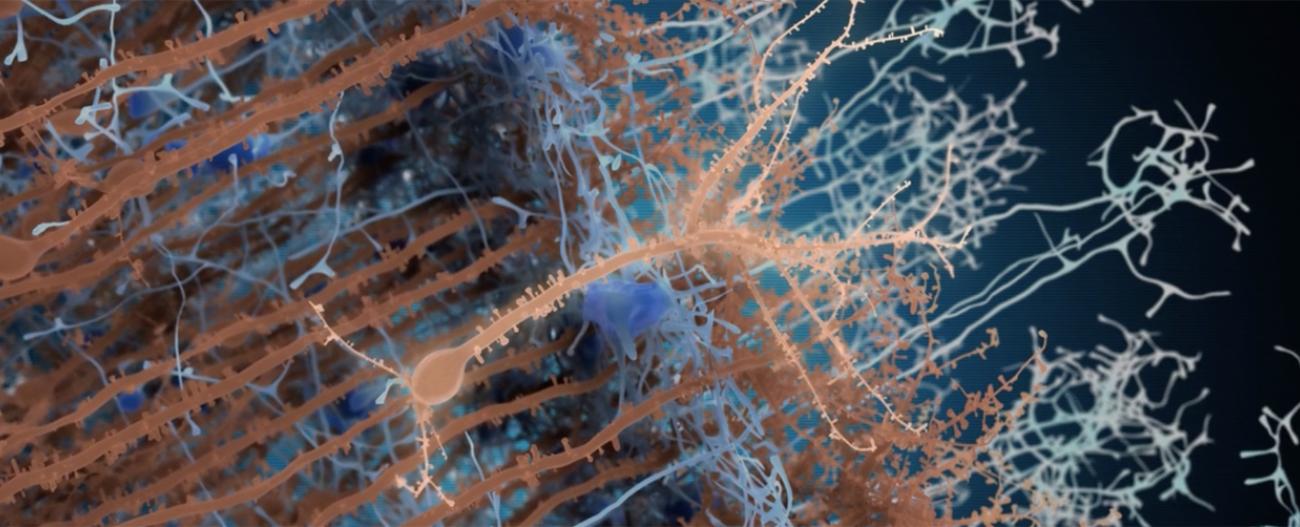
From completely artificial hearts to bionic eyes, recent progress in science has ushered in a new era for medicine. But how does the brain fit into this? The brain is a much less mechanical organ than the heart; it is the hub of our consciousness, a mental process that is not easy to reproduce artificially. But although the workings of the brain are still shrouded in mystery, scientists are now able to study it with increasing precision, and some are even identifying avenues for research that might one day enable us to repair brain lesions. Let's take a look at the latest research.
Science is taking new leaps every day. Our knowledge of living organisms is growing and paving the way for new treatment strategies.
In cardiology, for example, the French company CARMAT implanted its first pioneering artificial heart in December 2013. This autonomous prosthesis was developed by engineers in cooperation with medical teams. The transplant of this mechanical heart represented a milestone in efforts to repair and also improve vital human functions, offering longer life expectancy. However, so far this artificial heart has only enabled the few patients implanted with it in clinical trials to survive between one and nine months. It is nevertheless the beginning of an extraordinary adventure.
Another recent technological breakthrough is the "bionic eye" or retinal implant, several versions of which are being tested in Germany, the United States and France. Most often this involves glasses fitted with a small video camera that replaces the cells in the retina (the cells that degenerate in eye diseases such as retinitis pigmentosa). The images are converted into electrical information that is sent to an eye implant. In 2010, the implant contained 60 electrodes, which was already enough for the brain to interpret visual sensations such as following a white line on the ground and identifying silhouettes. Today this type of implant has up to 1,500 electrodes! This progress in techniques to improve visual perception is quite astounding – even if there is obviously more to it than simply increasing the number of electrodes.
Retinal implants are a way of repairing the eye. But is there any hope that one day we might be able to "repair" the brain? The question is highly relevant at a time when available medication for Alzheimer's, for example, treats the symptoms rather than stopping the progression of the disease and the decline in cognitive function.
The main functions of the brain by region
- Frontal lobe (behind the forehead): cognitive function, reasoning, language, motor skills, etc.;
NB : the olfactory bulb, which extends from the nasal cavity, mainly deals with olfactory information and is involved in adult neurogenesis. - Parietal lobe (at the top of the head): spatial representations, sensitivity and the sense of touch, etc.;
- Temporal lobe (behind the temples): auditory area, understanding of language, memory;
NB : the hippocampus, located in this temporal area, is important for memory formation and controlling emotions; the nearby subventricular zone (SVZ) and the dentate gyrus in the hippocampus are the only structures that can generate new neurons in adults. The neurons produced in the SVZ are then sent to the olfactory bulb. - Occipital lobe (at the back): the reception of visual messages.
The human brain – the focus of intense research
Although scientists understand the major functions of the different brain regions, they are all too aware that the workings of these regions are much more complex than they may seem, since they constantly interconnect with one another. Some functions involve several brain regions, and some regions are involved in several functions. For example, "our ability to develop social relationships is linked to the connectivity between distant neurons located in different brain regions that are far apart," has been explained by Jean-Pierre Changeux in a recent article in Trends in Cognitive Sciences.
The brain represents 2% of our body weight (approximately 1,200 to 1,500 grams) and uses almost 20% of our body's energy. It is one of the most vascular organs in the human body, requiring a significant blood supply to operate. As well as this intense metabolic activity, the adult human brain also has "the ability to produce new neurons in some regions," says neurobiologist Pierre-Marie Lledo, Head of the Perception and Memory Unit and the Department of Neuroscience at the Institut Pasteur. This discovery was made in humans by a Swedish team back in 1998. Then in 2003 the Institut Pasteur confirmed the presence of stem cells in the adult brain that could develop into neurons. "When we refer to the birth of new neurons – 'neurogenesis' – in the adult brain," continues Pierre-Marie Lledo, "we mean the phenomenon by which stem cells such as those in the hippocampus – an important region for memory formation and emotion control – differentiate into neurons."

Neuron loss is not irreversible
It is undoubtedly true that we lose neurons on a daily basis. But the discovery of stem cells in the adult brain has forced us to reconsider the presumption that we only have a limited number of neurons and they can't be replenished. "The brain is dynamic. Its plasticity is the key to regeneration," continues Pierre-Marie Lledo. Scientists in his Perception and Memory research unit (Institut Pasteur/CNRS) have begun to elucidate the conditions that encourage the integration of newly-formed neurons: "The networks of connections established by new neurons with the rest of the brain are denser in contexts of motivation and active learning than in passive contexts." This means that our mental state affects the functional development of the new neurons produced in the adult brain.

Pierre-Marie Lledo, neurobiologist, Director of the Perception and Memory Unit at the Institut Pasteur (Paris).
The brain is dynamic. Its plasticity is the key to regeneration.
Adult neurogenesis is regulated by several factors such as growth factors, neurotransmitters and hormones, but also by our circumstances and lifestyle: aging, pregnancy, stress, illness, physical activity, environment, diet, learning, and so on. It has been demonstrated that this ability to form new neurons can decrease, or even disappear, in the event of chronic stress. But in a rich, varied environment, the production of new neurons can triple in just a few weeks.
Golden rules for boosting neuron production
- Avoid routine and embrace change. Adapting to new situations is stimulating.
- Try to avoid information overload; favor useful information that improves understanding rather than pointless information. In this digital age with its deluge of data, we sometimes need to make a conscious effort to be selective.
- Avoid anxiety medication and sleeping pills – long-term use can hinder the production of new neurons.
- Move frequently and engage in physical exercise – our muscles produce substances that have a positive impact on the brain (via the bloodstream).
- Embrace otherness and foster social interaction, as some parts of our brain are stimulated when we open up to others.
- Pay attention to what you eat for two reasons: to avoid obesity, which hinders the production of new neurons, and also to maintain a healthy gut flora (microbiota), which communicates constantly with the brain.
See the presentation by Pierre-Marie-Lledo at the S3 Odéon conference on YouTube (in french).
Two brain regions have a natural capacity for self-renewal
Two regions of the brain, the hippocampus and the subventricular zone (SVZ), are a source of new nerve cells in adults.
In humans, it is the hippocampus (the dentate gyrus, to be more precise) which is especially active. In this brain region involved in memory formation, old neurons are replaced by newly formed neurons. A team from Karolinska Institutet even calculated in 2013 that we produce 700 neurons every day, which represents a renewal rate of approximately 1.75% each year. "At this rate, all the neurons in our dentate gyrus are renewed by the age of 50," says neurobiologist Gabriel Lepousez, a sensory perception and brain plasticity specialist at the Institut Pasteur. "That might sound impressive, but in actual fact it is relatively slow, especially if we are counting on this regenerative capability to treat brain lesions."

The new neurons produced in the subventricular zone are notable in that they migrate several millimeters towards the olfactory bulb after being formed. But unlike in rodents, the renewal of neurons in the human olfactory bulb is extremely limited or non-existent (less than 1% in 100 years). These newly generated neurons choose to be integrated in an area of the brain associated with the reward and motivation systems (the striatum). "The olfactory system is especially well developed in mice," explains Françoise Lazarini-Serandour, a scientist in the Institut Pasteur's Perception and Memory Unit. "New neurons are formed and integrated into the brain as soon as mice come across a new smell and memorize it." (See inset below.)
Understanding what makes the brain capable of regeneration
Françoise Lazarini-Serandour, a scientist in the Institut Pasteur's Perception and Memory Unit, is working on stem cells and constitutive neurogenesis in mice. Her team is particularly focusing on the subventricular zone. This is where new neurons are formed and migrate to the olfactory bulb, a structure responsible for the perception of odors – to which mice are especially sensitive. Along these lines she recently published a study in Brain, Behavior & Immunity that concerns microglia. She tells us more about it.

What have you learned from your observations in mice?
In 2012, we demonstrated that the formation of new neurons in this zone could restore lesions in the olfactory bulb. This reparative capability is also observed in other animals such as the zebrafish, but it appears to be less pronounced in humans. It is vital for us to understand how this whole process works so that we can use this knowledge to come up with possible methods to repair brain lesions.
Can you give us an example of a recent finding from your research?
In mice, we discovered the beneficial role of the brain's immune cells (macrophages), also known as "microglia", in reparative processes [source: Brain, Behavior & Immunity, February 2017]. These microglial cells, which surround neurons, fight against the damage caused by lesions, "clean" the injured tissue and facilitate the integration of new neurons. This integration process is very important – it's not enough just to produce new neurons; they have to be able to integrate into their environment and establish a sufficient number of connections with surrounding neurons quickly enough to avoid being destroyed.
Does this research show that we naturally have the resources in our brain to repair lesions?
Yes, the brain has complex repair mechanisms that we are gradually deciphering. And all these repair "methods" act in highly complex, subtle ways. During our research into microglia, for example, we measured how inflammation affects the repair process: too much inflammation is harmful and prevents neurons from being repaired, but a small amount appears to be beneficial. It's as if the nerve tissues need to be slightly damaged to request, or authorize, the repair process.
Is neural regeneration a potential future approach for the treatment of neurodegenerative diseases?
Of course. The degeneration of neurons in the olfactory bulb can be observed in several neurodegenerative diseases such as Alzheimer's and Parkinson's, and in some psychiatric disorders. The formation of new neurons, especially in the olfactory bulb, is a phenomenon that is providing real hope for the treatment of these diseases. The therapeutic strategy on which we and other teams are working aims to redirect constitutive neurogenesis to the damaged regions so that they can be repaired with the patient's own cells. There are of course several difficulties still to be overcome, but the experimental data is encouraging us to continue exploring this avenue.
Using neurogenesis to treat the brain
In 2008, the Institut Pasteur raised new hope for therapeutic strategies aimed at repairing the brain. Pierre-Marie Lledo's unit and the Molecular Virology and Vaccinology Unit directed by Pierre Charneau confirmed that glial stem cells, which can develop into neurons, migrate from the subventricular zone to the olfactory bulb. The scientists also discovered that the absence of olfactory stimulation, as a result of a lesion in the sensory organ, boosts the transformation of glial cells into neurons. The brain therefore has intrinsic self-repair properties! "By diverting newly-formed neurons away from their germinal zone to the damaged areas, we may be able to contribute to the development of new therapeutic strategies for the treatment of neurodegenerative diseases such as Huntington's chorea or Parkinson's disease," emphasized Pierre-Marie Lledo at the time.
Facilitating the formation of new neurons and the acquisition of new cognitive skills – isn't adult neurogenesis a bit like the mythical Fountain of Youth? You could say that. But as Françoise Lazarini insists, "when we talk about neurogenesis, we mustn't forget that we're dealing with old age and the diseases and disorders associated with it."
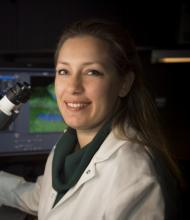
We're investigating an elixir of youth!
Are there really rejuvenating factors in the blood?
For some years now we have known that there are "rejuvenating factors" in the blood. Experiments have shown that treating old organisms with blood from young organisms has rejuvenating effects. I carried out a pioneering study on this subject at Harvard University in the United States. I discovered that young blood can rejuvenate an older brain.
How did you do that?
When we gave young blood to experimental models, it increased the production of new neurons and resulted in vascular remodeling in the cortex and in other areas. During aging, impaired vascularization leads to the deterioration of blood vessels. This improved vascularization increases blood flow, which could stimulate neuron activity. We also showed in 2014 that a blood factor known as GDF11 was capable of inducing the same effects on its own.
What are you working on at the moment in the Institut Pasteur's Perception and Memory Unit?
I'm actively looking for other rejuvenating molecules. I believe that there is a "cocktail of youth" waiting to be discovered. This research offers promising new therapeutic possibilities to fight against the effects of aging. One of our aims is also to test the rejuvenating impact of GDF11 on the brain in a model of Alzheimer's disease.
A technique to take research further
In 2010, the Perception and Memory Unit developed an original technique for the selective stimulation of new neurons. This technique, based on light activation of new neurons made sensitive to photons, enabled the team to demonstrate that these new neurons are integrated into preexisting nervous circuits, where they establish a growing number of functional connections (synapses) over a period of several months.
"Optogenetics enables us to analyze how neurons communicate among themselves so that we can understand how neurons and neural networks operate," explains neurobiologist Gabriel Lepousez, a sensory perception and brain plasticity specialist at the Institut Pasteur. "Using this technique, we can selectively stimulate a specific cell type without disrupting the neighboring 'silent cells'. This enables us to understand the role of a given neuron, to identify which other neurons it communicates with, what its purpose is, etc."
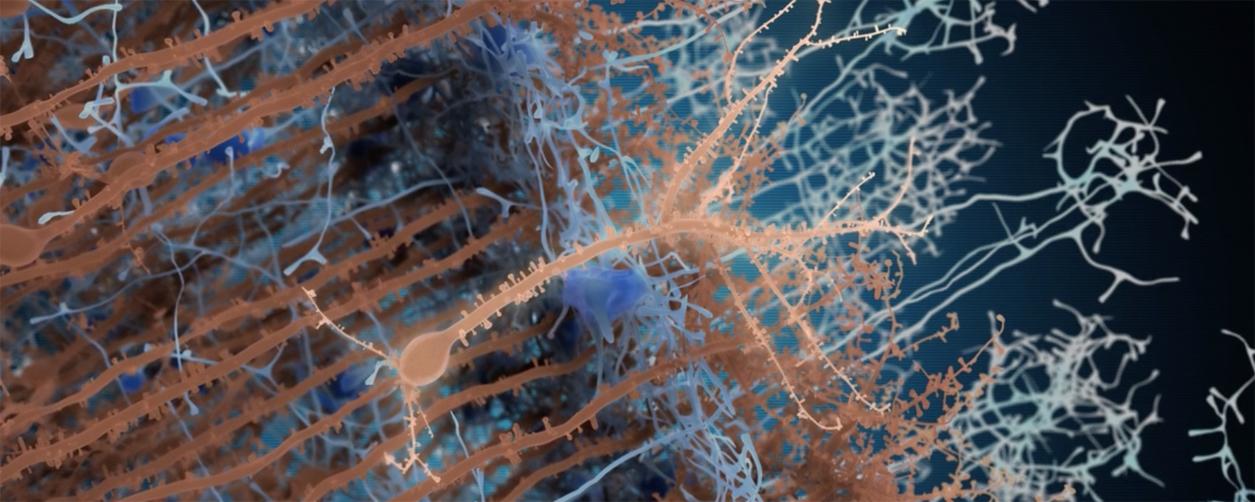
This research requires a multidisciplinary effort from neurobiologists, biochemists and also mathematicians and physicists, who model the vast quantities of data generated by these observations so that they can be analyzed. Drawing on a wide variety of skills in this way opens up a vast field of research in neuroscience, even if many questions remain unanswered: "We still find it hard to understand how a neuron is able to integrate all the information it receives," continues Gabriel Lepousez, "when you consider that a single neuron can form between 1,000 and 10,000 connections with other neurons. When it comes to adult neurogenesis, we know that if a new neuron does not fill its quota of synapses, it disappears. So maybe a technique such as optogenetics can be used to stimulate neurons individually to help them establish stable connections."
Precision medicine therefore appears to be the next avenue to explore in the efforts to treat the incredibly complex maze that is the brain. It goes without saying that the utmost care must be taken when dealing with such an intricate organ. Ultimately, what makes us human is not our muscles, our blood or our genes – it is the 1,400cm3 organ that we refer to simply as the brain. "Our brain is the hub of all our thoughts, our memory, our dreams, our social relations, our feelings – our soul," concludes Pierre-Marie Lledo.
Neuroscience and transhumanism – Repairing brains, enhancing brains
In connection with the international Brain Awareness Week, the Institut Pasteur is organizing a public lecture and debate on its Paris campus on March 18, 2017, at 2pm (REGISTRATION REQUIRED).
The rapid progress we are currently witnessing in science is changing our day-to-day lives. The continued development and increasing power of new technologies in the fields of biology, artificial intelligence and neuroscience are now tangibly raising the prospect of being able to repair neurological dysfunction and restore independence for patients suffering from severe central nervous system impairments. But these encouraging breakthroughs in reparative medicine inevitably also harbor the more troublesome prospect of a medical approach that seeks human enhancement, summed up by the term "transhumanism", a concept that looks at the future of humankind from a new perspective.
Lecture and debate with the following speakers (in alphabetical order):
- Jean-Pierre Bourgeois, a neurobiologist at the Institut Pasteur
- Didier Coeurnelle, Vice-Chairman of AFT-Technoprog (the French Transhumanist Association)
- Alexandre Maurer (Technoprog)
- Pierre-Marie Lledo, a neurobiologist and Director of the Department of Neuroscience at the Institut Pasteur
- Jacques Testart, a French biologist (birth of the first test-tube baby in France in 1982) and Honorary Chairman of the French Citizen Science Association
- Serge Tisseron, a psychiatrist and psychoanalyst, member of the National Academy of Technologies of France
This event will be coordinated by Jean-François Chambon, Vice-President Communications and Fundraising at the Institut Pasteur.
Saturday March 18 from 2 to 5pm
28 rue du Docteur Roux, 75015 Paris, France
Pasteur metro station (line 6) – Volontaires metro station (line 12)
*Doors open at 1.30pm*
Admission: Registration required (by email)
Proof of identity will be required at the Institut Pasteur reception desk.
To register: ggheusi@gmail.com





